Exploring Ise Jingu: Japan’s Most Sacred Shinto Shrine
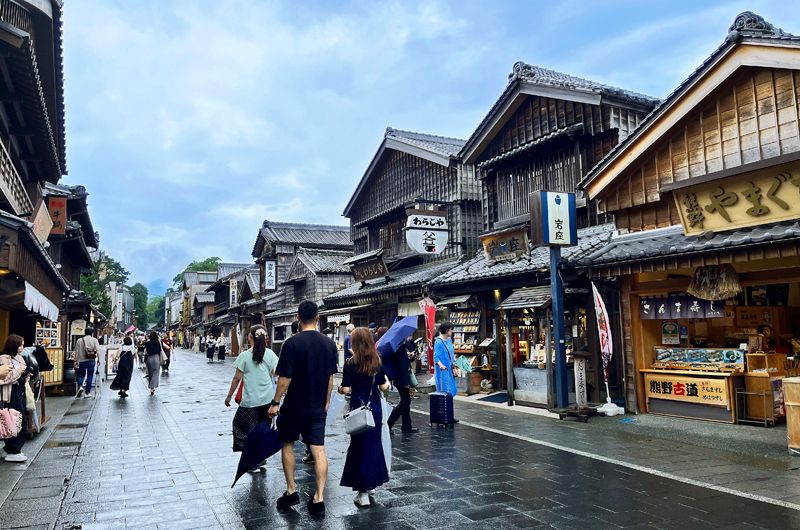
Ise in the heart of Japan is home to Ise Jingu, a Shinto shrine so revered, it is known as the spiritual home of the Japanese people. It is a place where both myth and history live side by side. Ise Jingu is where Japan's highest-ranked deity, the sun deity Amaterasu Omikami, is enshrined. Since ancient times, pilgrims have visited the sacred shrine from all over Japan, creating a cultural crossroad. Join me as I explore some of the interesting spots located around this amazing shrine complex.
The Ise Jingu Complex
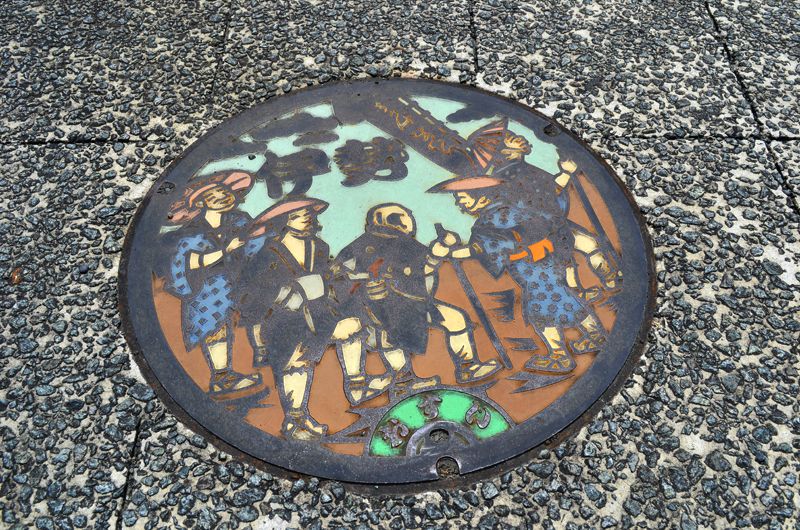
Pilgrims making the long journey to Ise Jingu
Ise Jingu consists of two main sanctuaries: Naiku and Geku. Each sanctuary has its own distinct architectural style and cultural significance. Most pilgrimages to Ise Jingu start our journey at Geku.
Geku
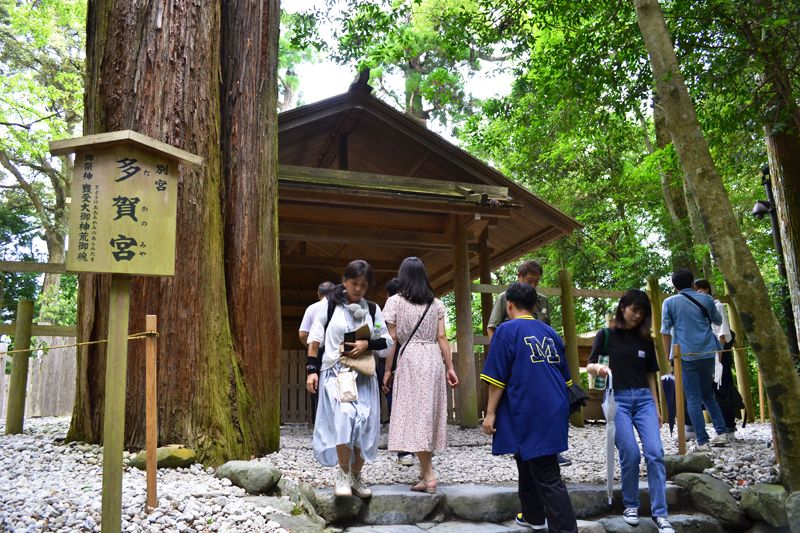
Visitors praying at one of the small shrines at Geku
Geku is dedicated to the deity, Toyouke Omikami, the deity of agriculture, food, and industry. Since ancient times, it has been customary to worship at Geku first before visiting Naiku.
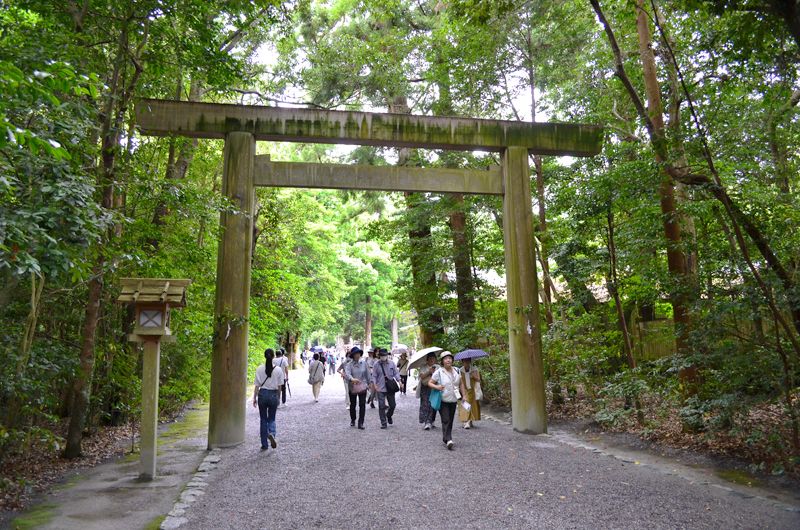
One of the torii shrine gates at Geku
This part of Ise Jingu doesn’t receive as much attention as Naiku but is definitely worth a visit for its Shinto architecture and healing nature. Walking under the giant torii shrine gate to enter the sacred grounds, I was immediately hit with the gentle sunlight filtering through the trees and was filled with a refreshing feeling to begin my day in Ise.
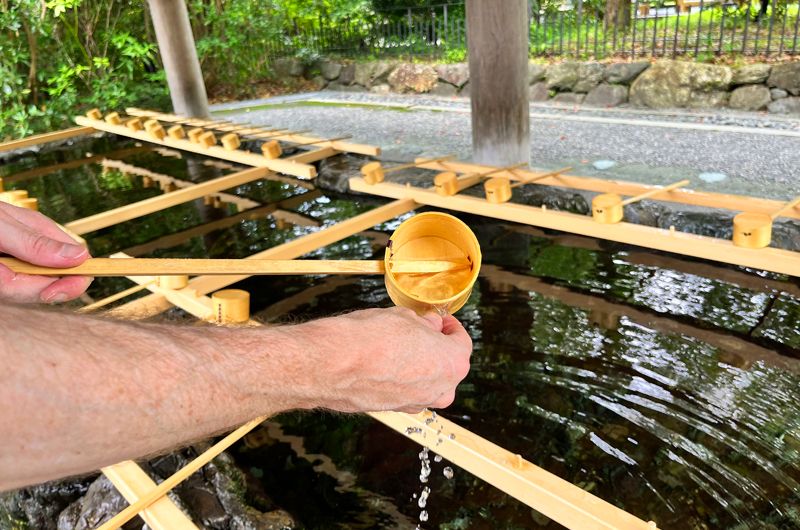
Purifying at the entrance of Geku
Ise City Station
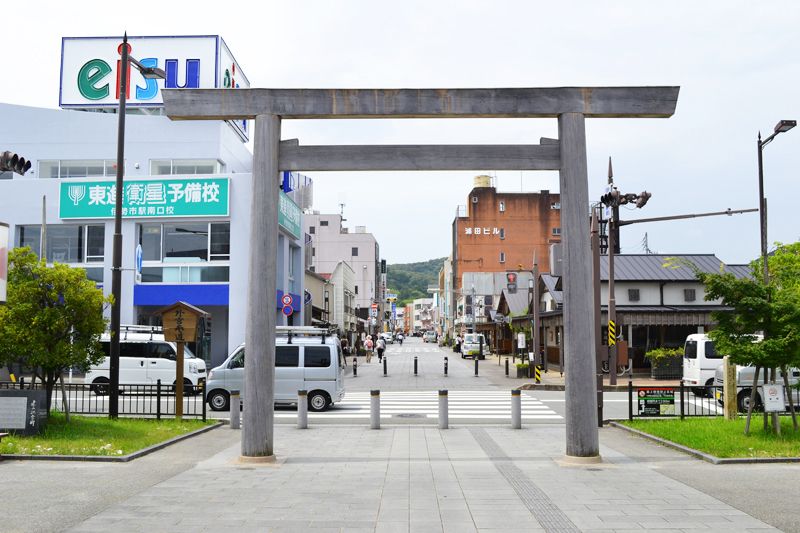
The approach to Geku from Iseshi Station
The easiest way to reach Geku is from Iseshi Station, which is a short 400-meter walk away. A large torii shrine gate in front of the station marks the approach to Geku.
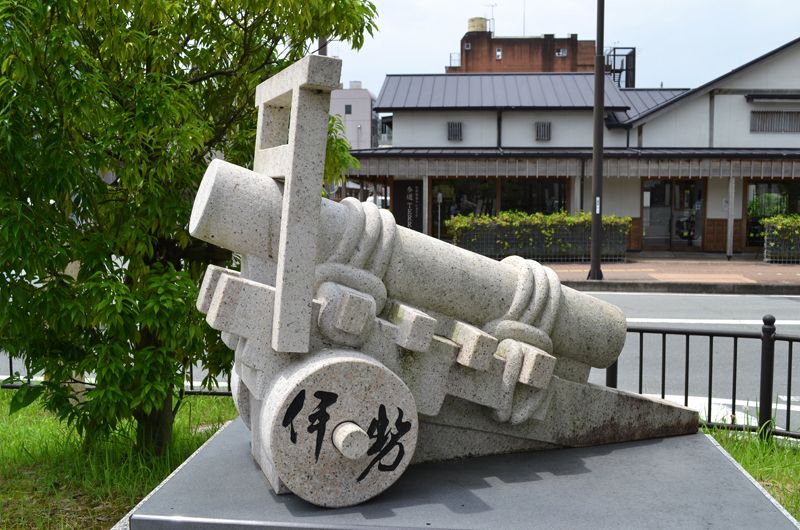
Okihiki cart outside Iseshi Station
While I was walking to the shrine gate, I spotted an interesting statue of an okihiki cart. These carts are used to transport wood when the structures of Ise Jingu are rebuilt true to their original design every 20 years in a ritual called shikinen sengu. This ancient tradition is used to keep the shrine looking tip top and to pass on the skills and knowledge of the shrine’s carpenters to the next generation.
Geku Sando Shopping Street
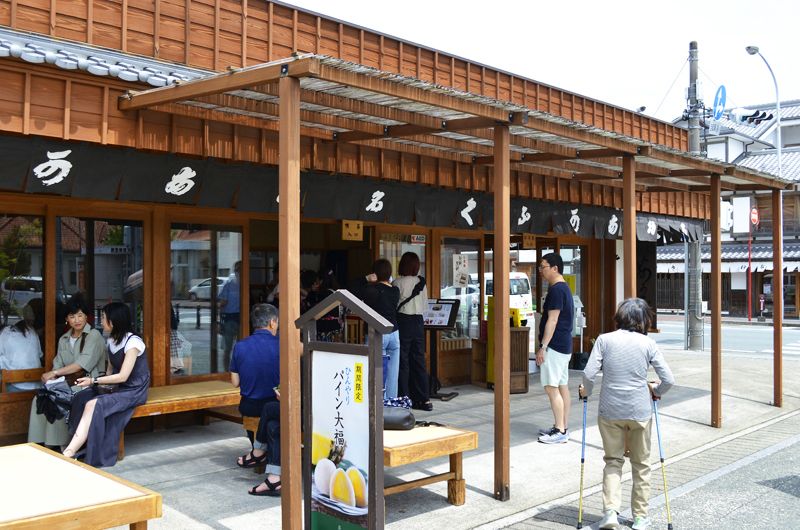
Souvenir shop at Geku Sando Shopping Street
On the way to Geku from Iseshi Station, you will pass through Geku Sando, a trendy shopping street that is full of fashionable shops and restaurants. This atmospheric lane is not as busy as the shopping streets around Naiku, so is a great place to grab a meal or pick up a souvenir.
Naiku
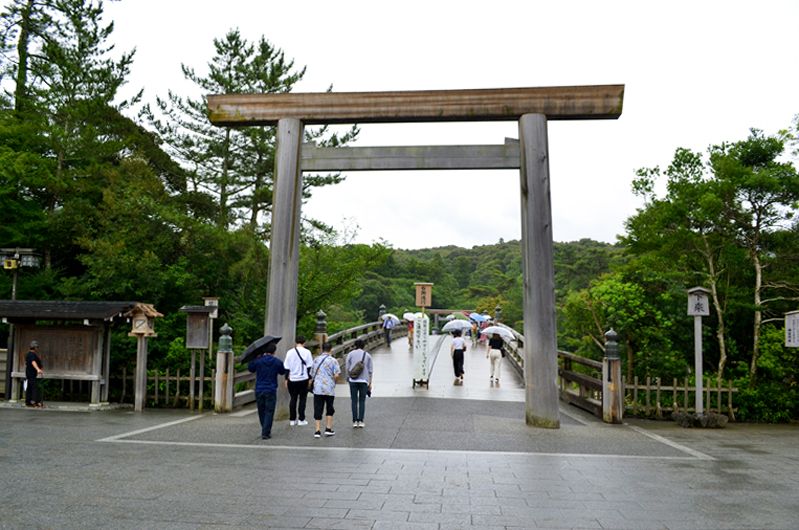
The main shrine gate at the entrance of Naiku
Naiku is the primary and most sacred sanctuary at Ise Jingu. It is where the sun deity, Amaterasu Omikami, is enshrined. According to Japanese myth, Amaterasu has been the ancestral deity of the Japanese Imperial Family for more than 120 generations of emperors and empresses. She is worshiped as the guardian of the Japanese people.
Isuzugawa Mitarashi
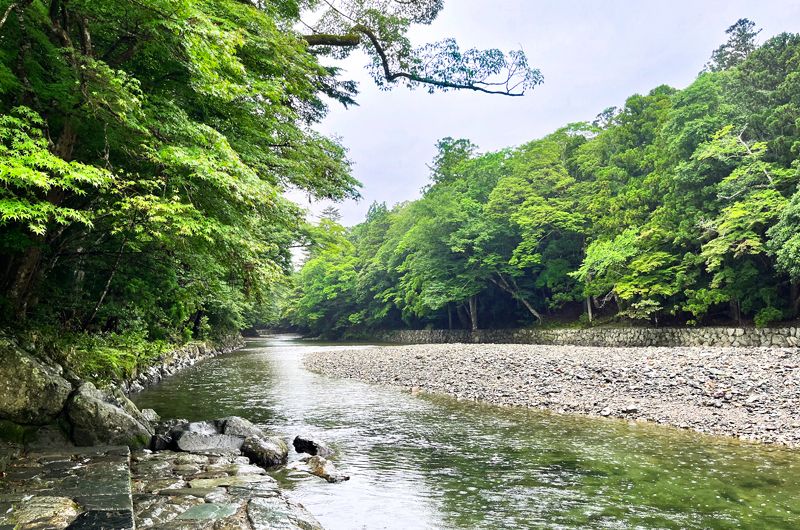
The Isuzugawa River at Naiku
A fantastic spot that a lot of visitors just pass by is the tranquil Isuzugawa River. This sacred stream is where pilgrims can perform a ritual called “mitarashi”, where they purify and cleanse themselves with the waters of the stream. I found it a great place to connect with the natural surroundings and escape the crowds that usually descend upon the shrine.
Kazahinomi no Miya Bridge
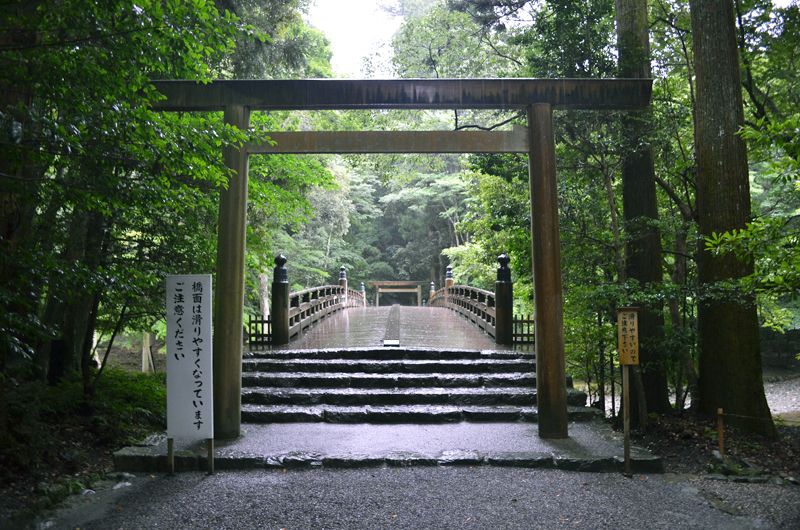
A shrine gate marking the entrance to Kazahinomi no Miya Bridge
Another quiet place to escape the masses is the Kazahinomi no Miya Bridge, which crosses the Isuzugawa River. Walking around the serene, forested shrine grounds on a rainy day with very little people around only added to the spirituality and mystery of the sacred shrine. The background music of the gravel path crunching beneath my feet and the birds chirping in the trees, took me away to another world, one far away from the reality of the present day.
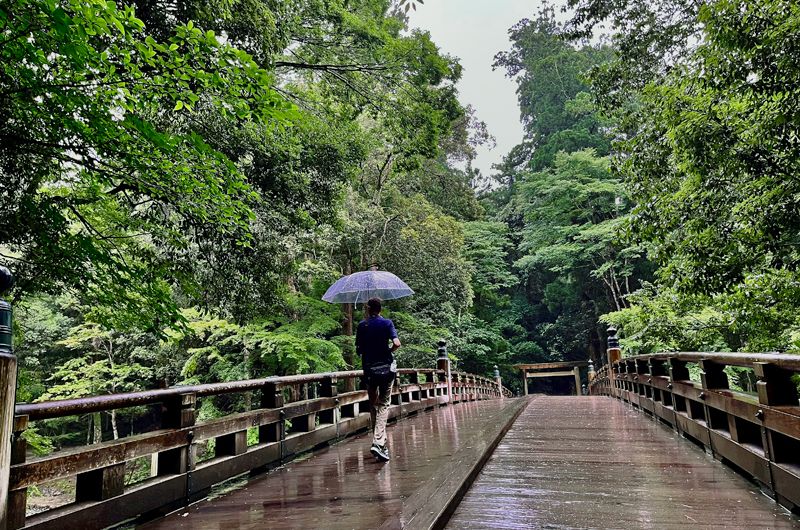
Crossing the Kazahinomi no Miya Bridge
Oharaimachi
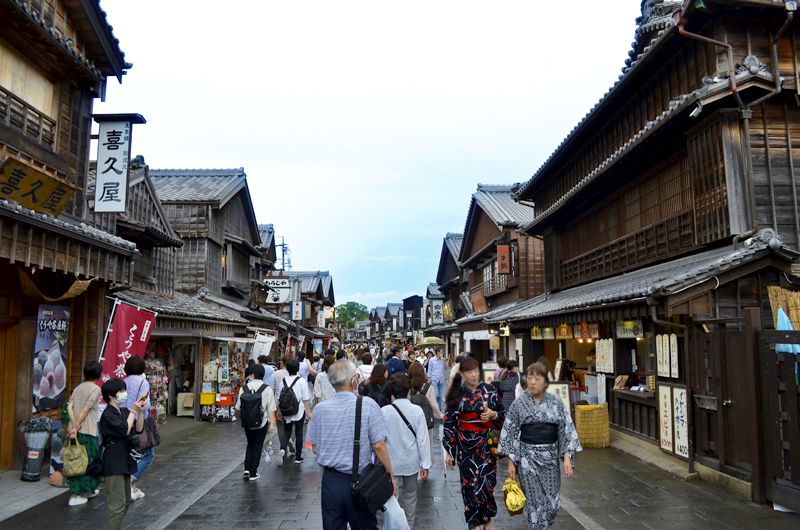
The hustle and bustle of Oharaimachi
Around Naiku, make sure you check out the bustling Oharaimachi. This stone-paved shopping street is a popular tourist spot that developed around the torii shrine gate of Naiku. It is full of restaurants, souvenir stores and old confectionery stores set in traditional Japanese buildings.
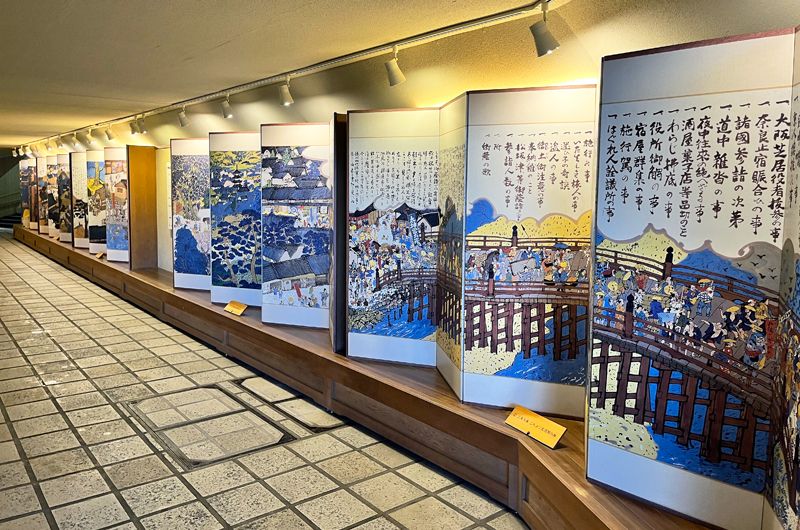
Folding screen paintings at the Naiku Okage Sando Underpass
To reach the Oharaimachi Shopping Street, I walked through an underpass called Naiku Okage Sando. This interesting underpass has folding screen paintings of “Okage Mairi”, the pilgrimage from Kyoto, the ancient capital of Japan to Ise Jingu during the Edo Period (1603-1868).
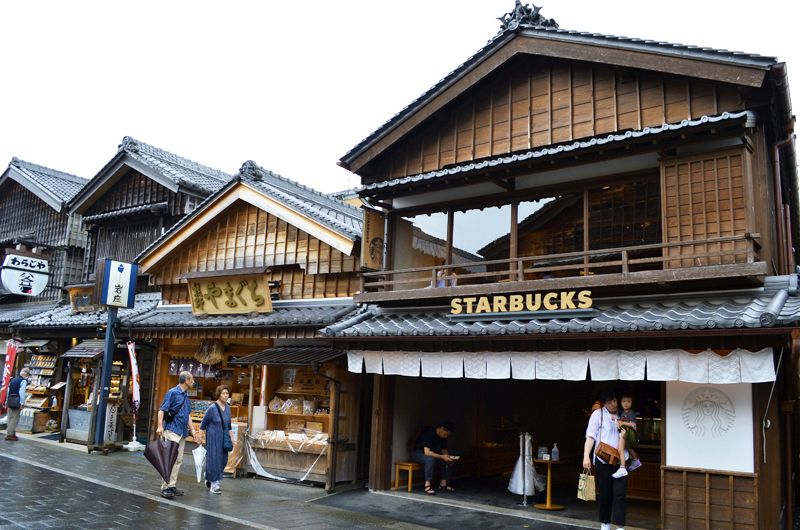
Starbucks at Oharaimachi Shopping Street
Walking along this traditional street, I could catch a glimpse of Japan’s rich cultural heritage as well as sample some of Ise’s tasty local delicacies. I was happy to stumble across a Starbucks which was set in a traditional old wooden building. It was the perfect place to take refuge from the rain and enjoy the atmosphere of this historic shopping street.
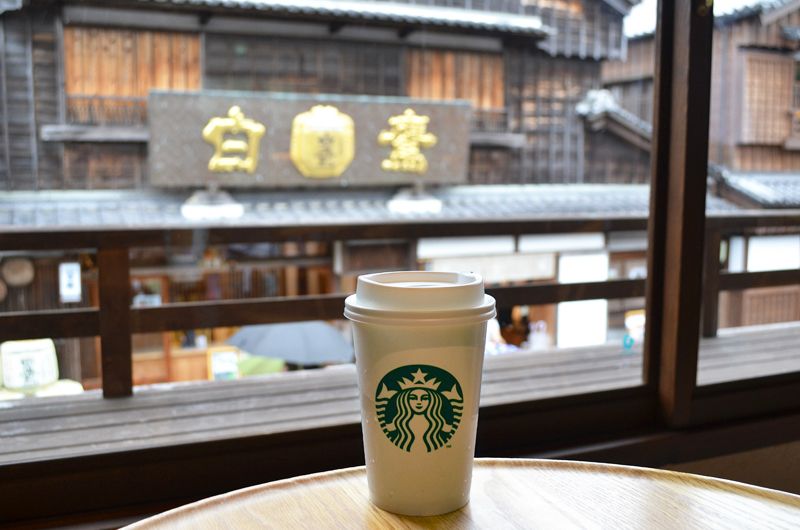
Enjoying a coffee and watching the people walk by on a rainy day in Ise
Okage Yokocho Shopping Street
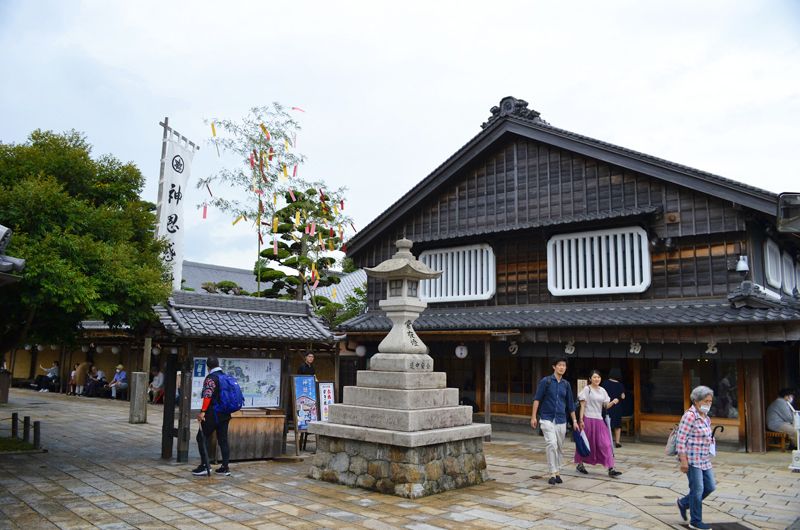
The entrance to Okage Yokocho Shopping Street
This interesting shopping street which runs off Oharaimachi is designed to recreate the atmosphere of a traditional Japanese townscape from the Edo period. The name of the street comes from the visitors or pilgrims to Ise Jingu, who wanted to express their appreciation or gratitude towards the shrine, which is okage in Japanese.
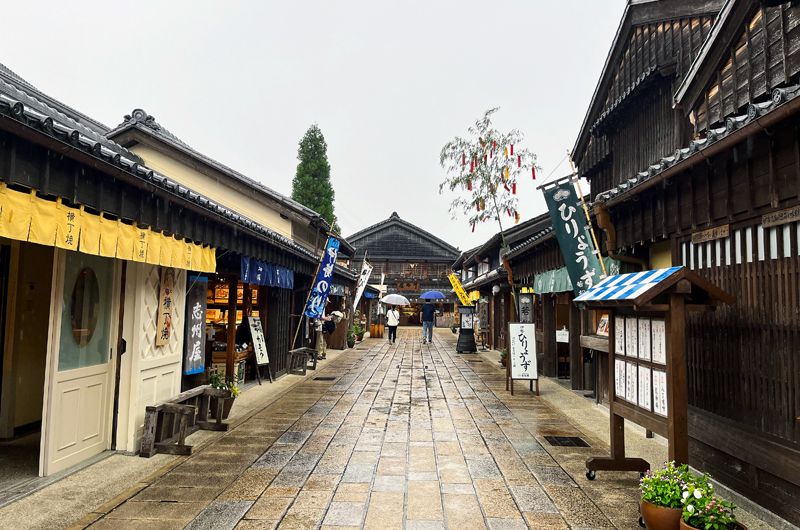
Okage Yokocho Shopping Street
I could enjoy the ambience of this charming spot with its traditional wooden buildings, and lantern lit streets. It also offered me the chance to succumb to my sweet tooth and try one of Ise’s most popular dishes, Akafuku. This tasty treat is mochi rice cakes topped with sweet red bean paste.
Okage Yokocho Maneki Neko Statues
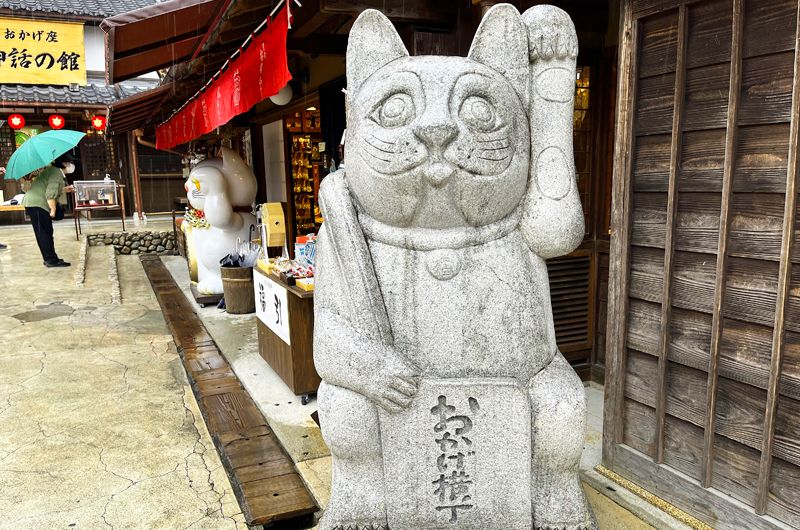
A giant maneki neko statue at Okage Yokocho
Maneki Neko are cute cat figurines which are believed to bring good luck and fortune to their owners. I was really surprised to see a scattering of both big and small maneki neko statues around Okage Yokocho. Every year they are brought from around Japan for a festival held here on Maneki Neko Day in September.